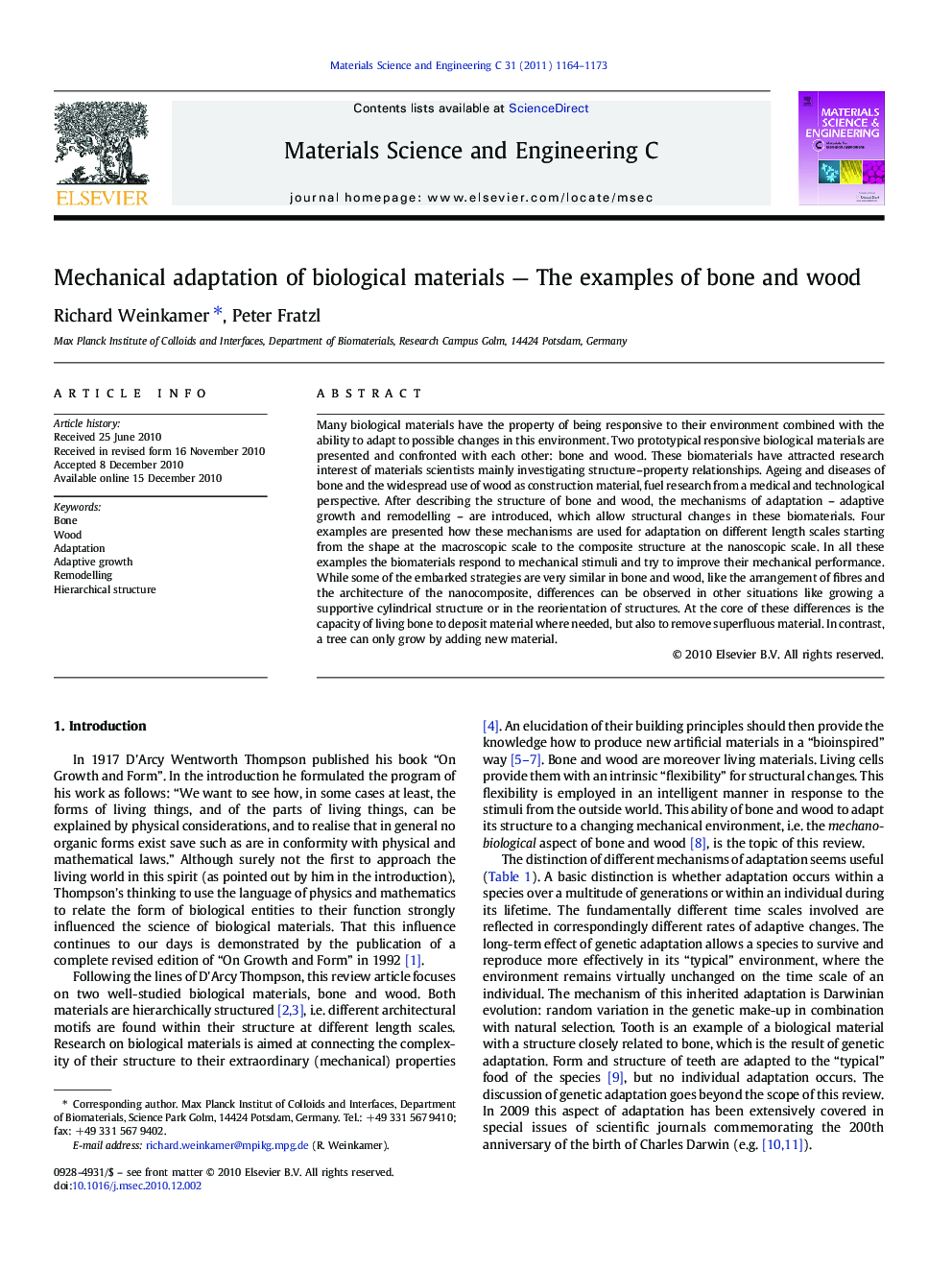| Article ID | Journal | Published Year | Pages | File Type |
|---|---|---|---|---|
| 1429765 | Materials Science and Engineering: C | 2011 | 10 Pages |
Many biological materials have the property of being responsive to their environment combined with the ability to adapt to possible changes in this environment. Two prototypical responsive biological materials are presented and confronted with each other: bone and wood. These biomaterials have attracted research interest of materials scientists mainly investigating structure–property relationships. Ageing and diseases of bone and the widespread use of wood as construction material, fuel research from a medical and technological perspective. After describing the structure of bone and wood, the mechanisms of adaptation – adaptive growth and remodelling – are introduced, which allow structural changes in these biomaterials. Four examples are presented how these mechanisms are used for adaptation on different length scales starting from the shape at the macroscopic scale to the composite structure at the nanoscopic scale. In all these examples the biomaterials respond to mechanical stimuli and try to improve their mechanical performance. While some of the embarked strategies are very similar in bone and wood, like the arrangement of fibres and the architecture of the nanocomposite, differences can be observed in other situations like growing a supportive cylindrical structure or in the reorientation of structures. At the core of these differences is the capacity of living bone to deposit material where needed, but also to remove superfluous material. In contrast, a tree can only grow by adding new material.
